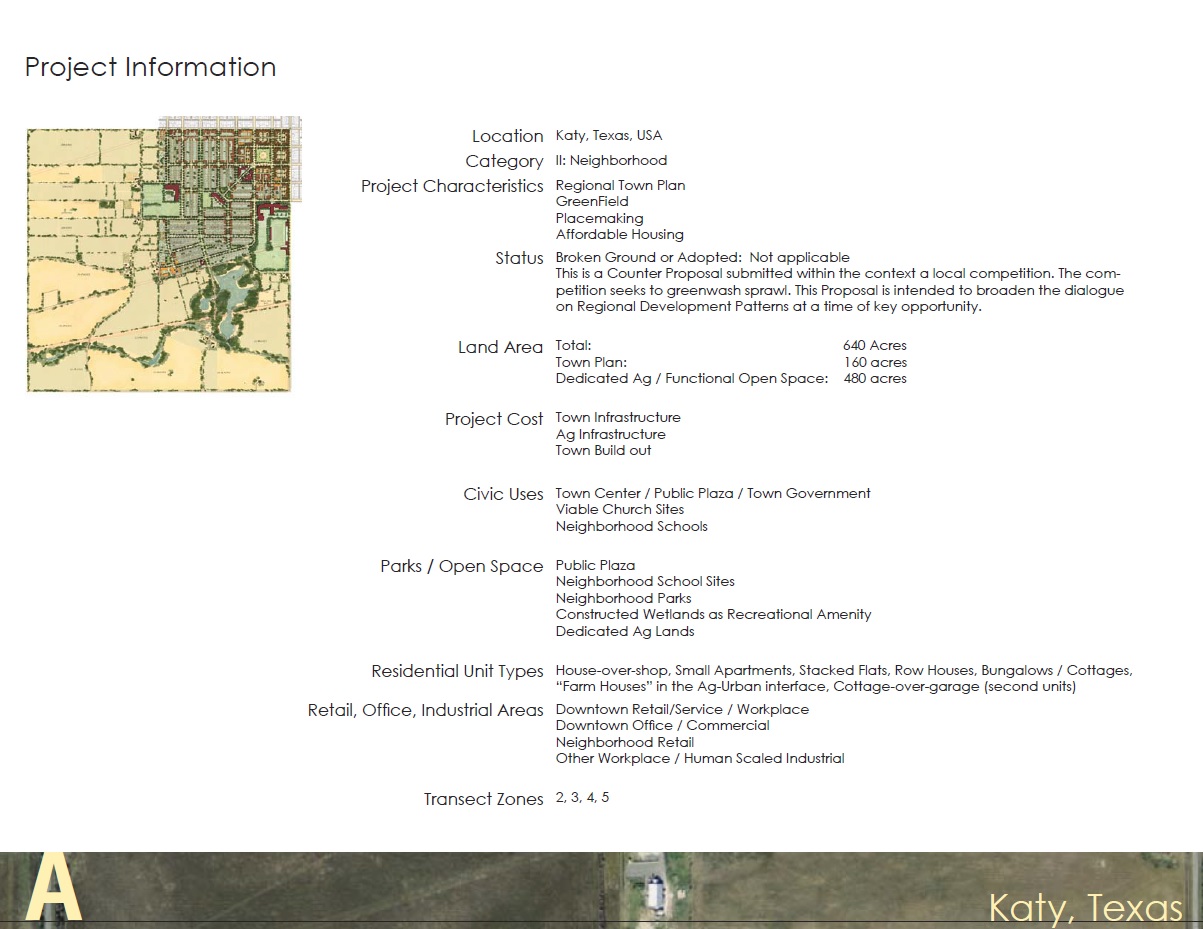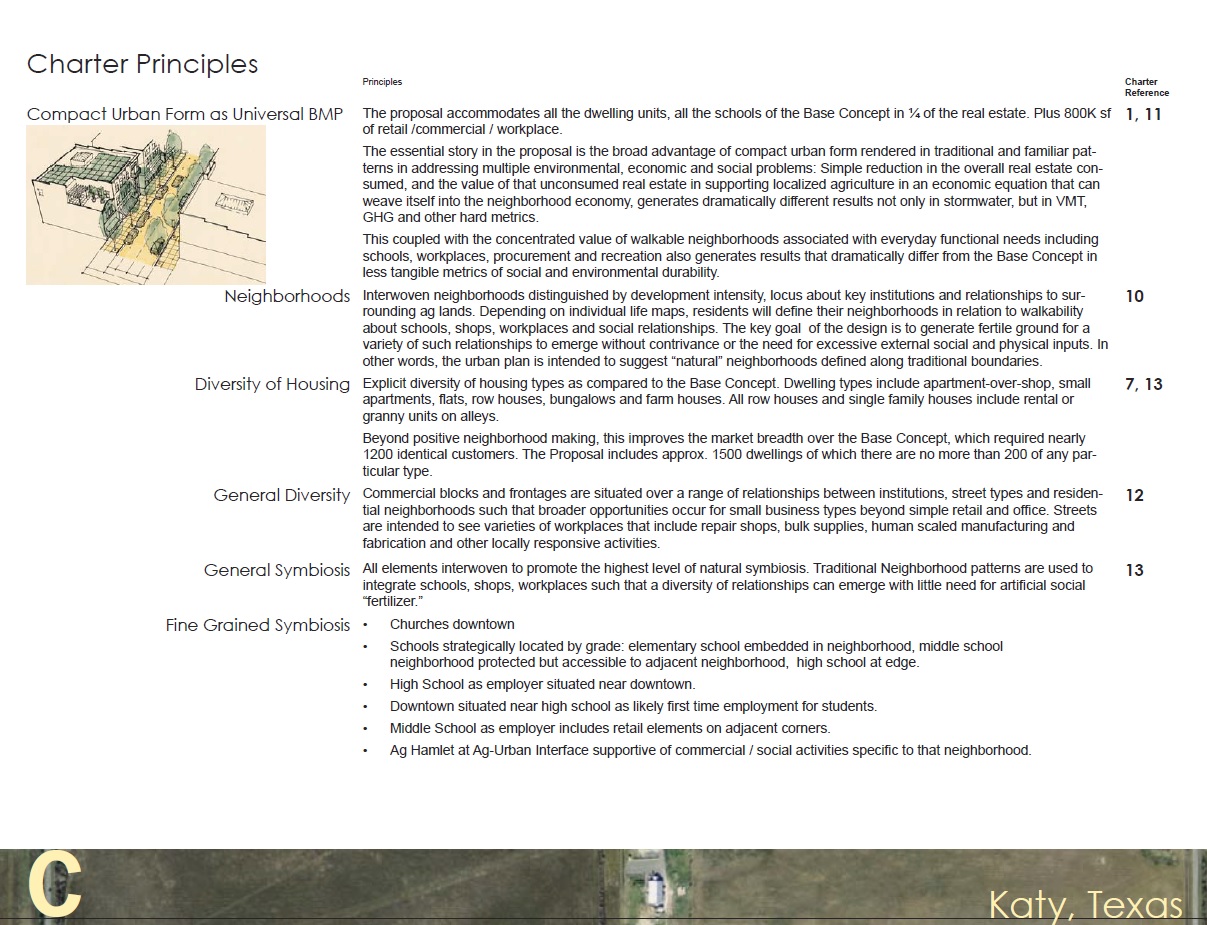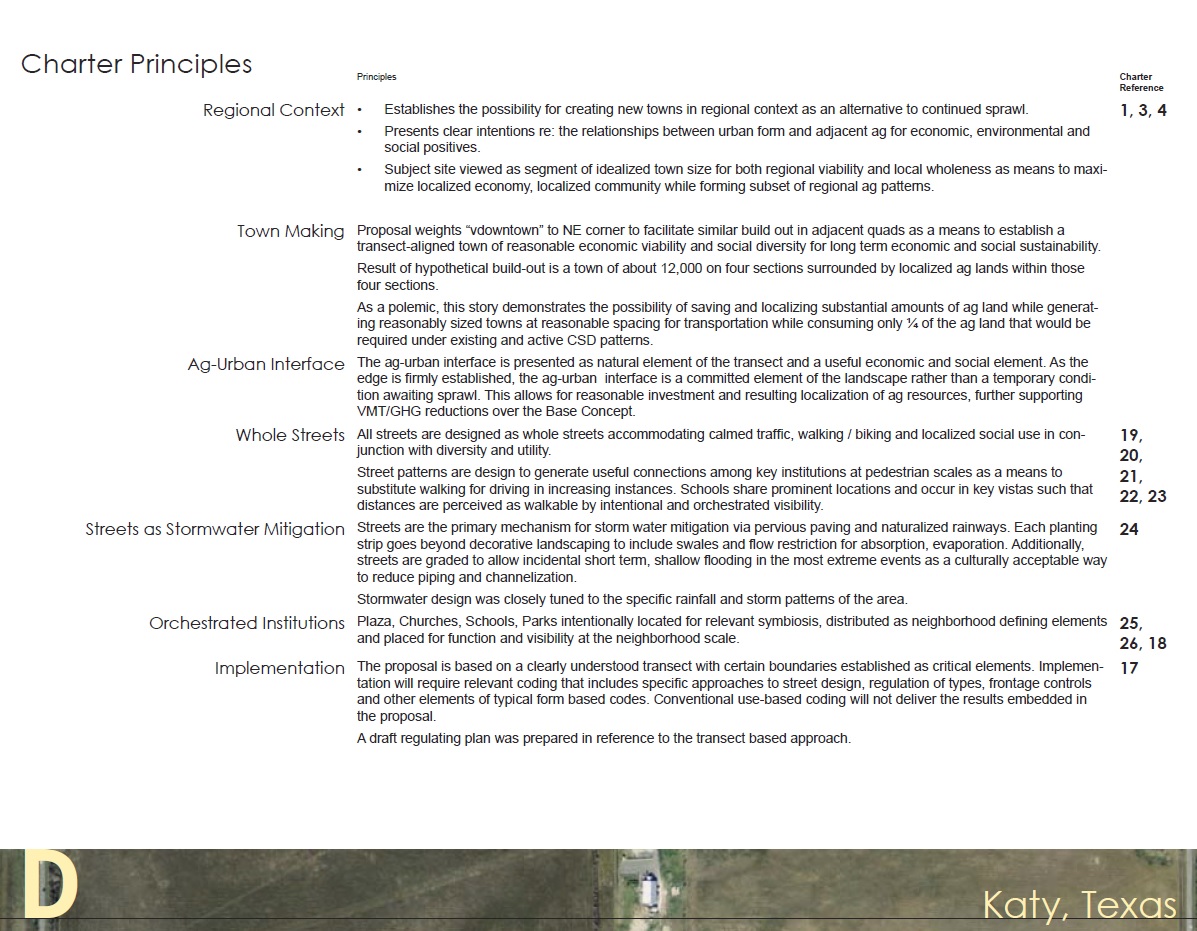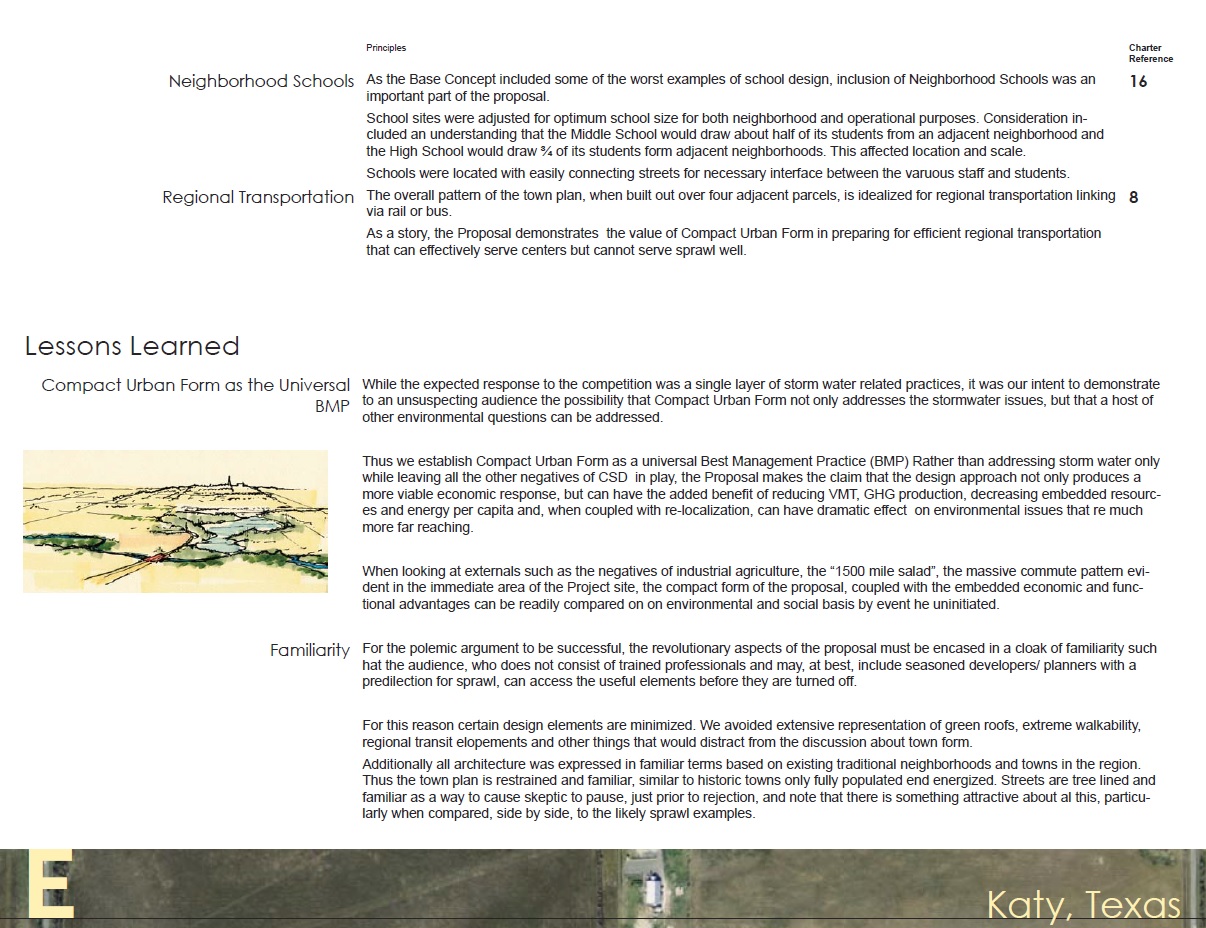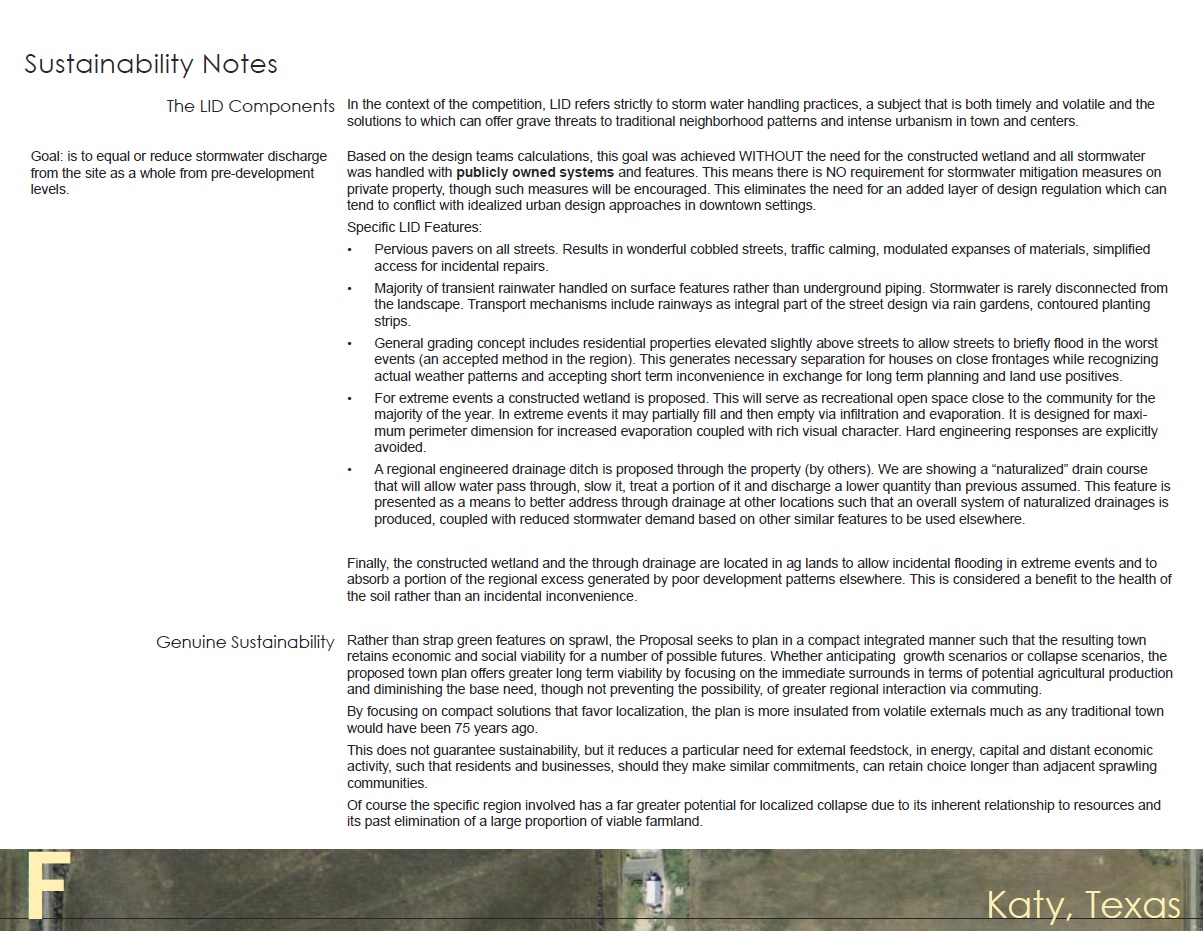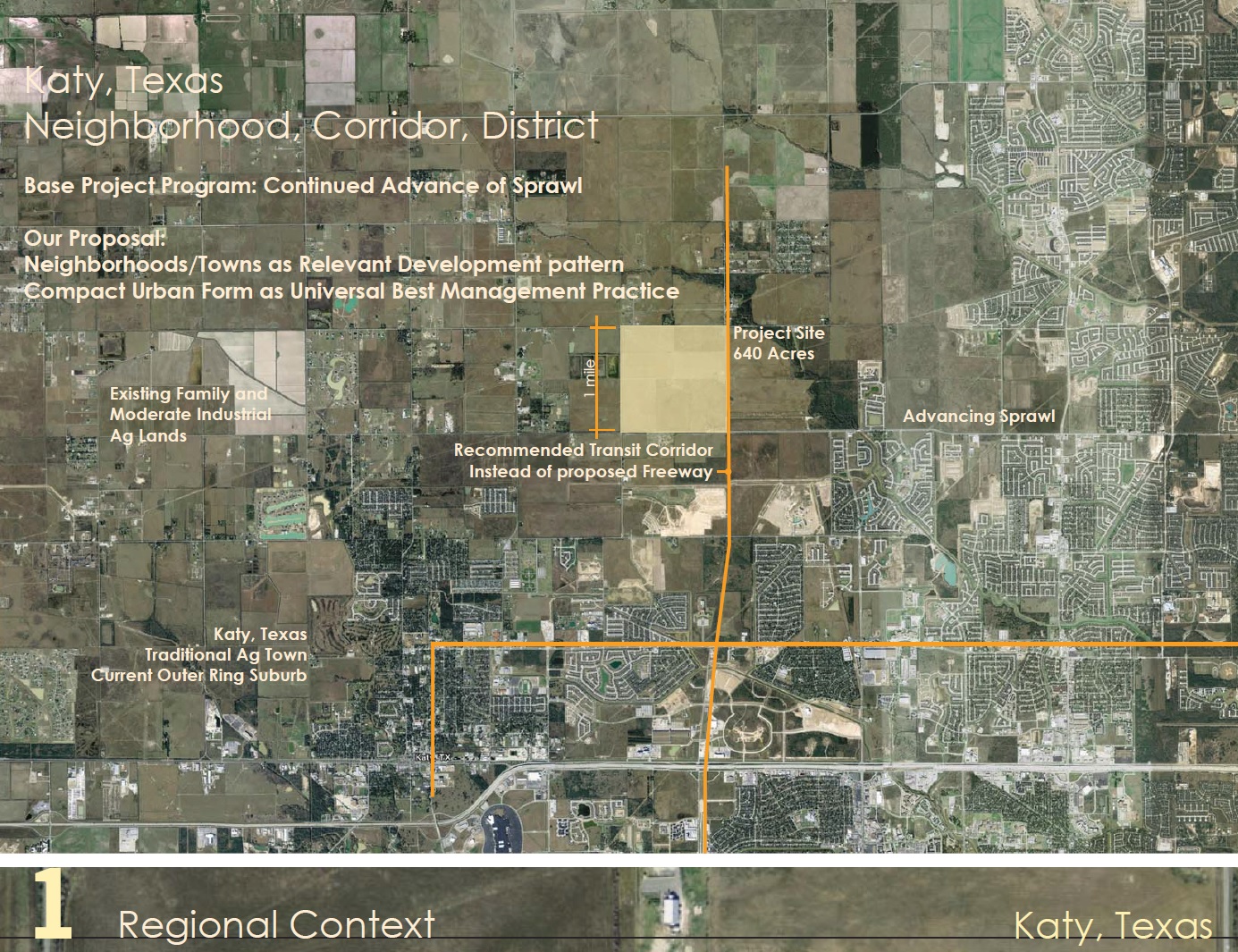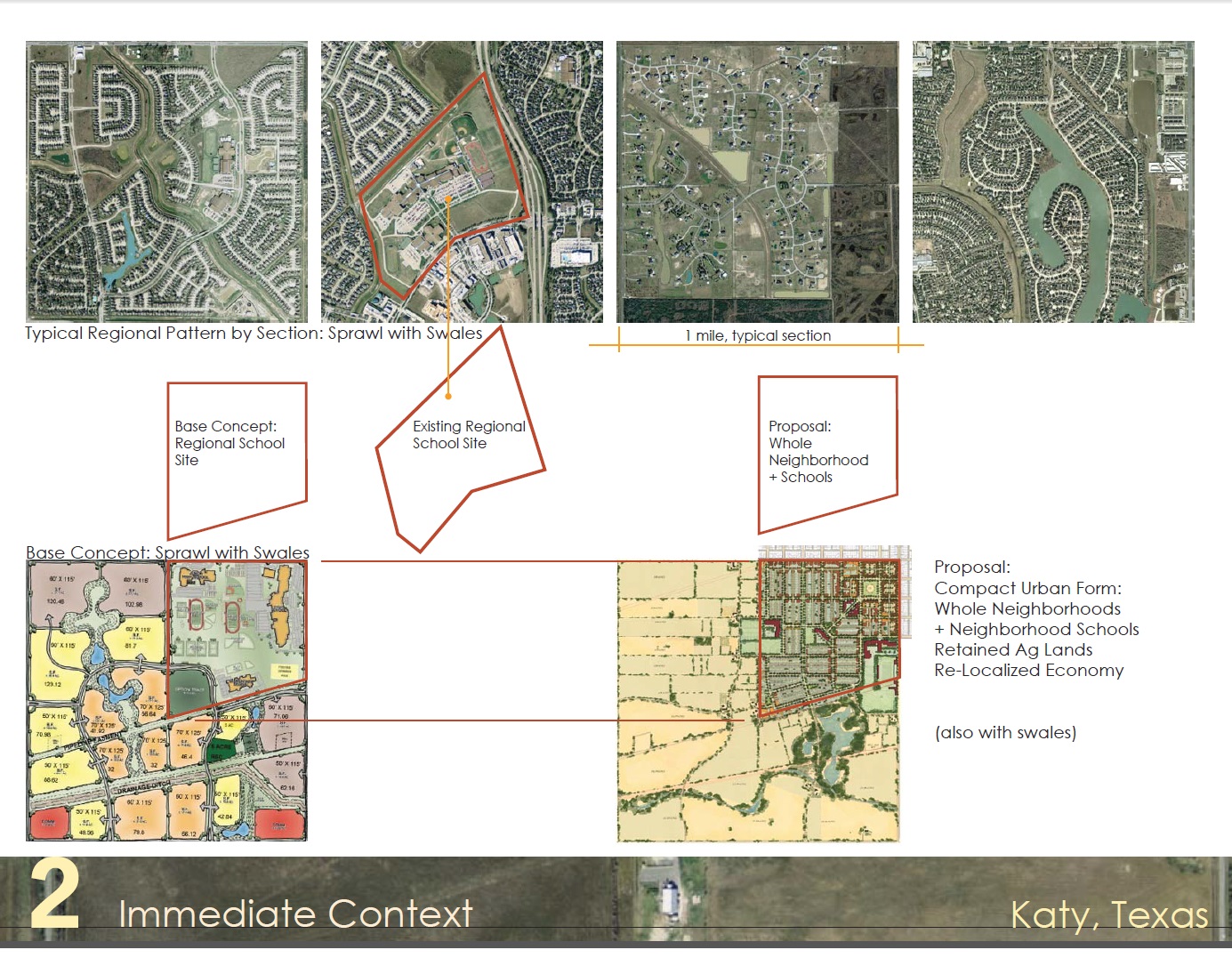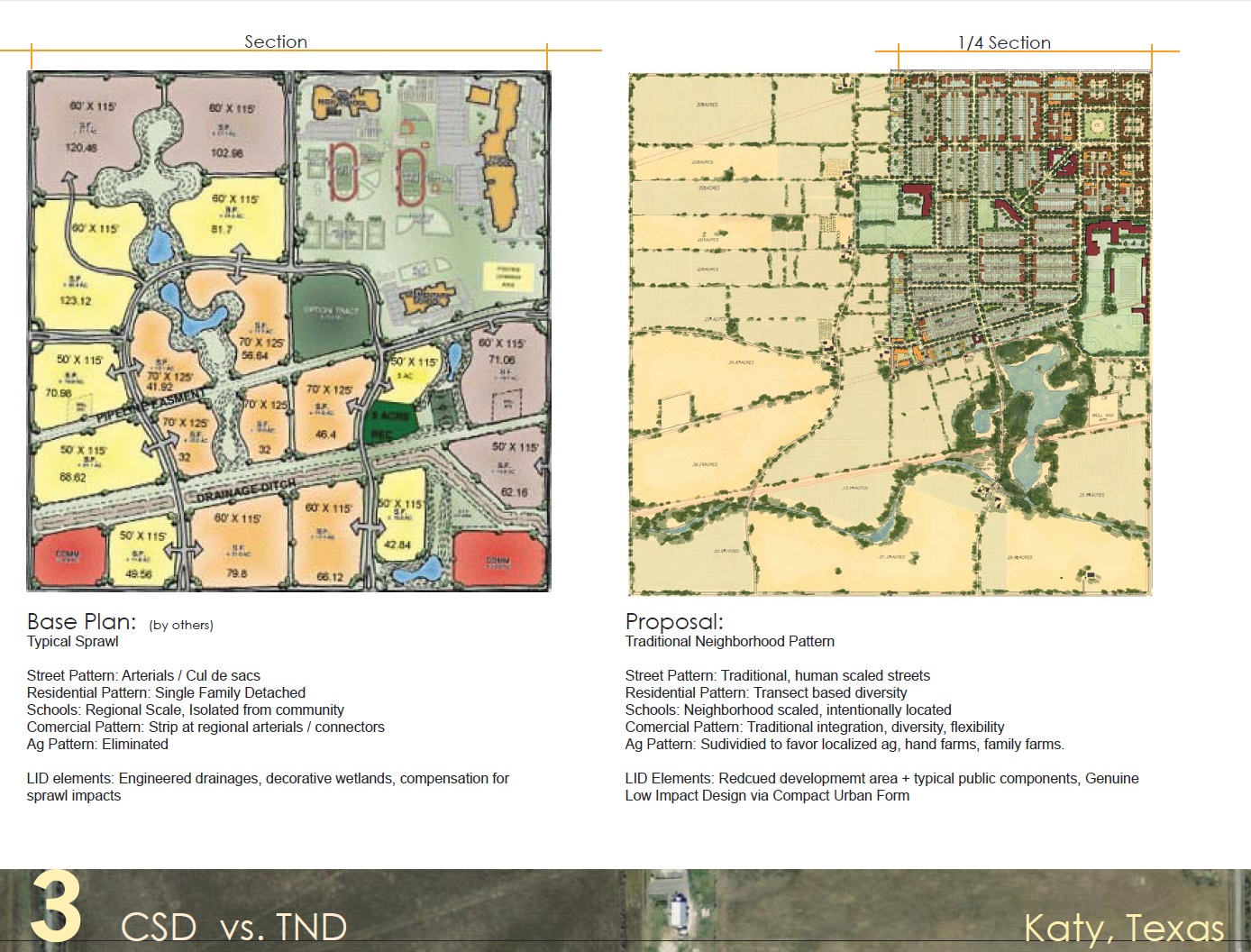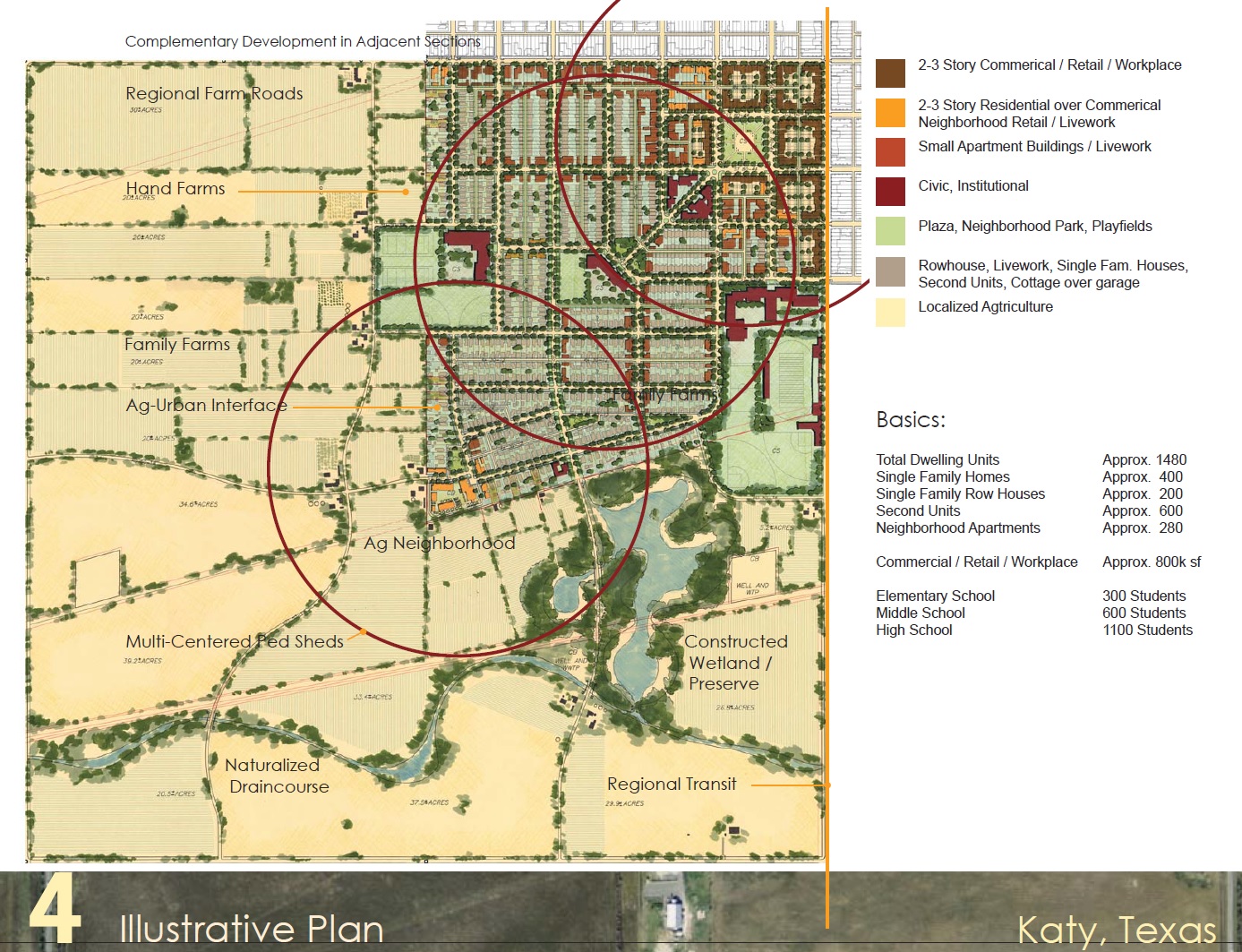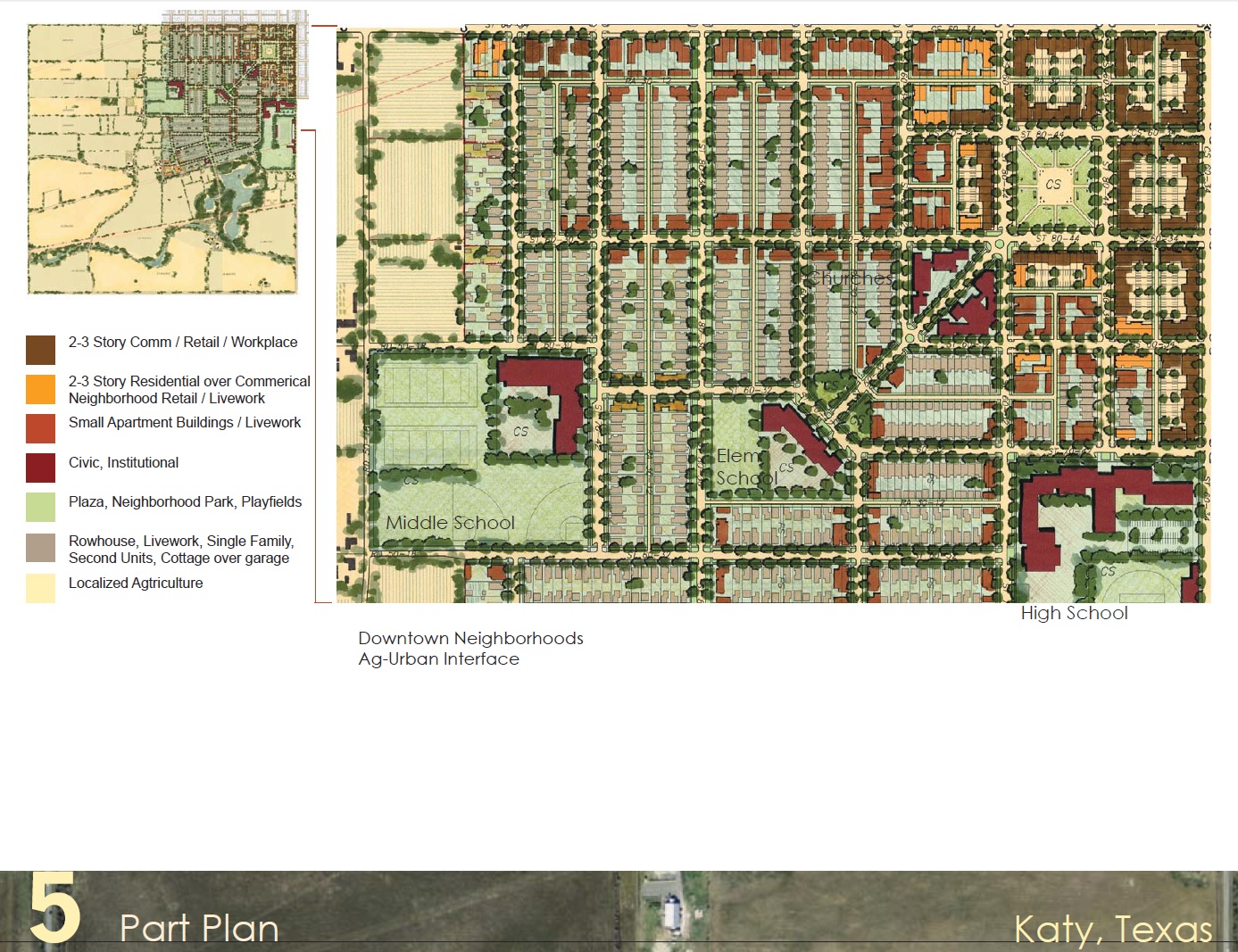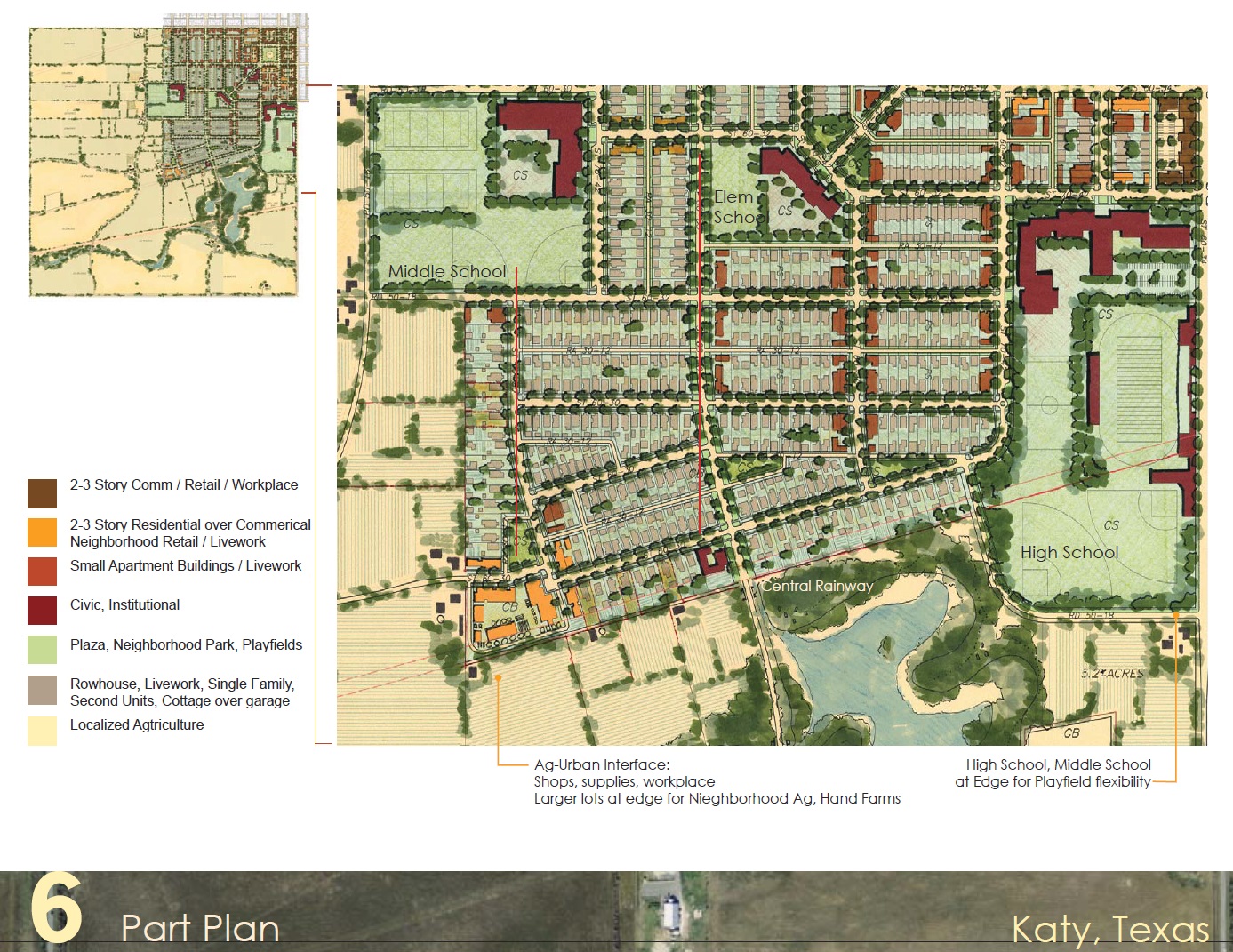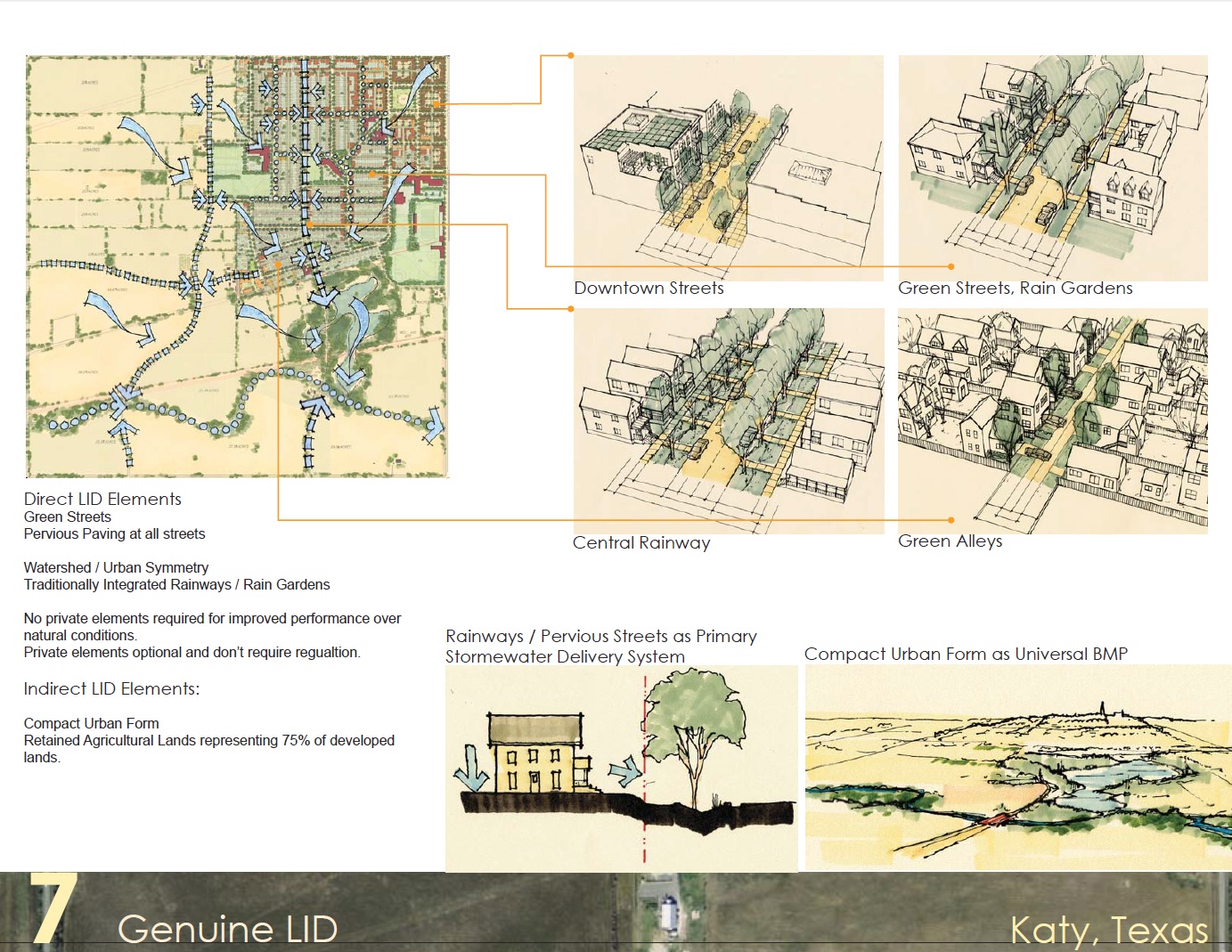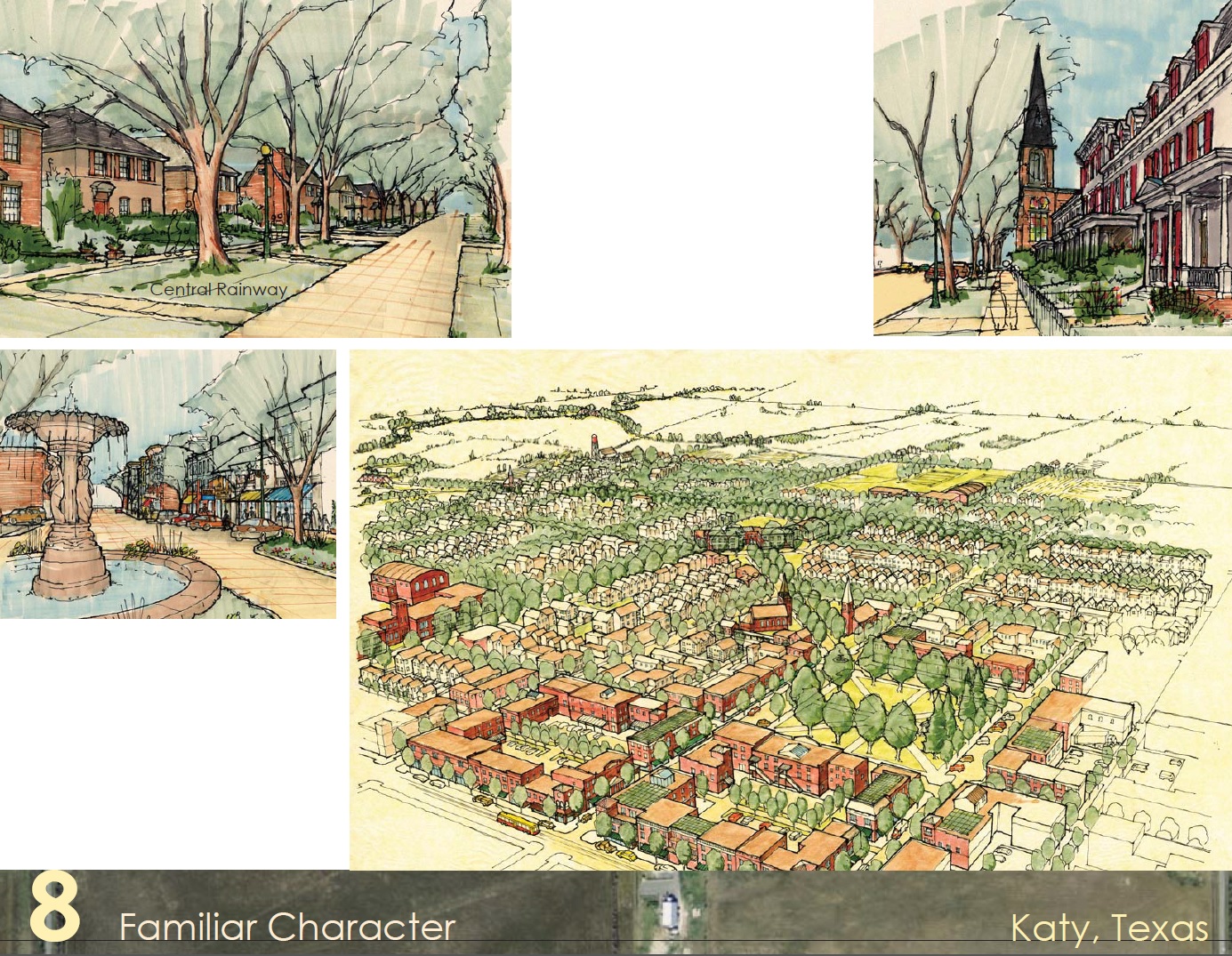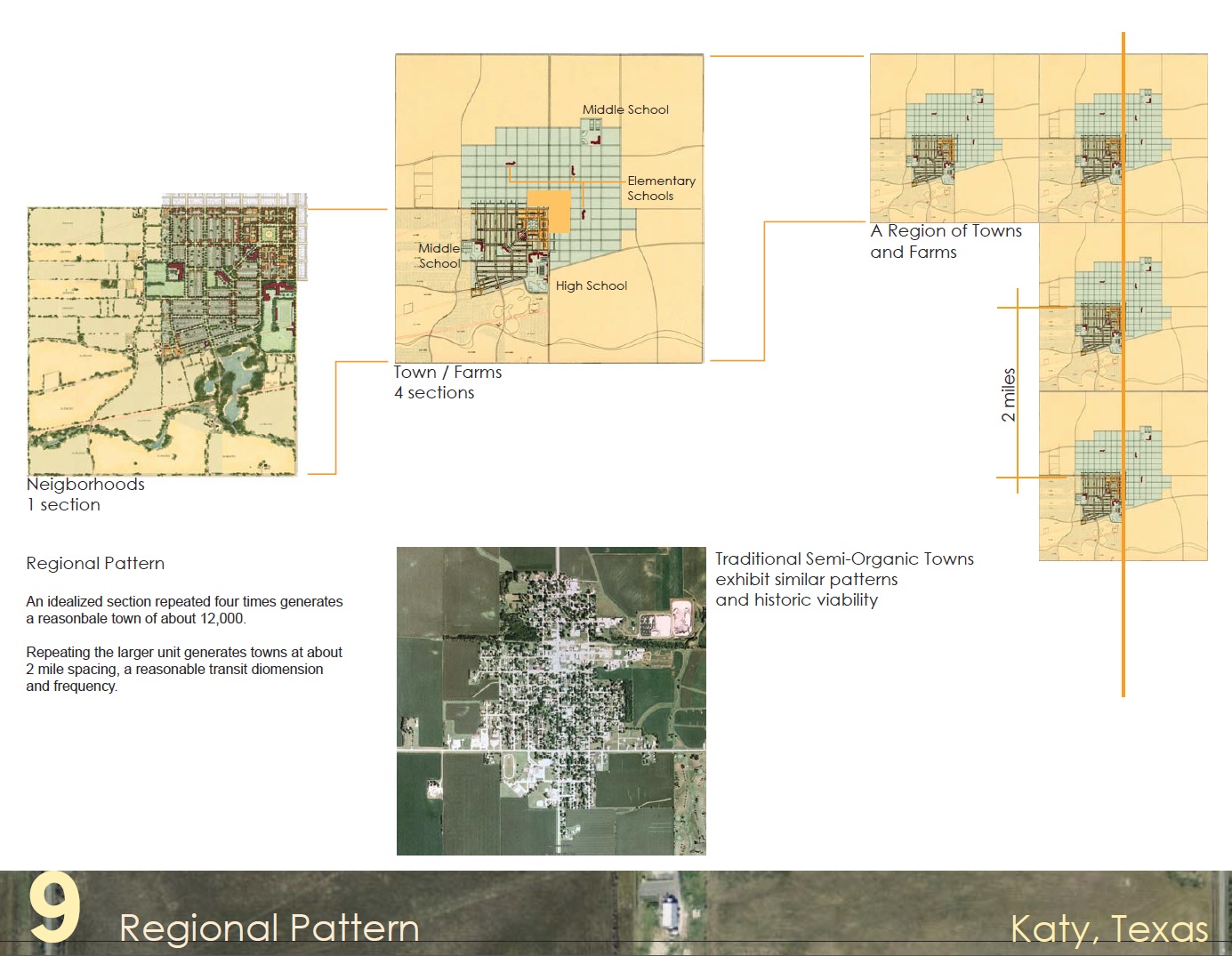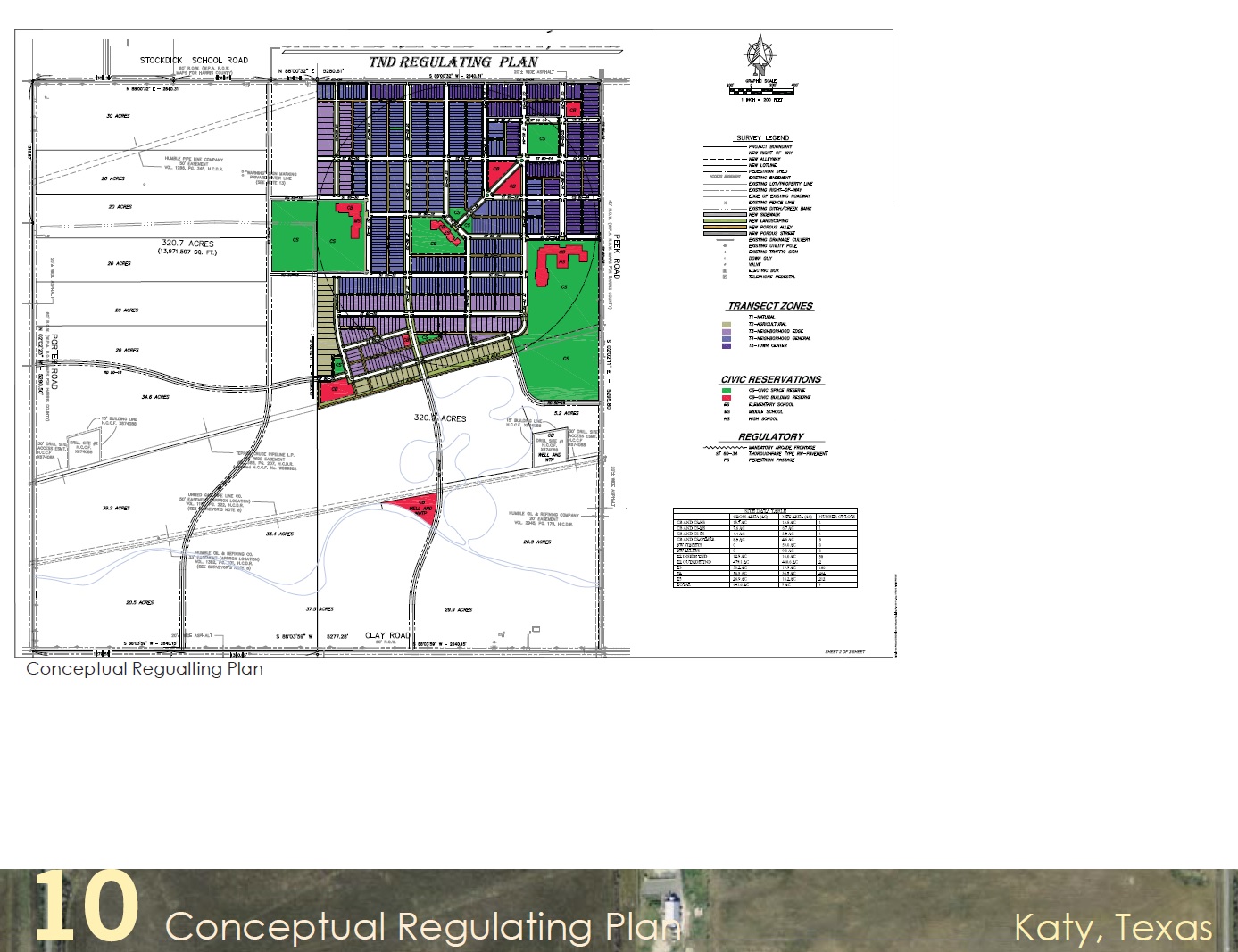Some would argue that no additional development should be allowed on the Katy Prairie, given the nature of the irreplaceable prime farmland and unique wetland habitats. In addition to the unlikely-hood that such a ban would ever be enacted, an argument could be made that some development nodes on the Prairie will be needed in a post-peak oil era when it may no longer be feasible to ship food long distances. Labor will be the only substitute for the hydrocarbon-intensive inputs we use in agriculture today. Proximity to the land will be critical, and the Salon des Refuses project demonstrates how a limited set of nodes on the prairie could accommodate much if not most of the population projected to cover the prairie in sprawl in the next 30 years, in such a way that most of the ecological and agricultural infrastructure would be preserved for generations to come.
Can stormwater infiltration practices alone render a development “low impact”? What kind of development has the smallest environmental footprint? Is there a market for pedestrian-friendly development in auto-centric Houston? These are the questions raised by the LID contest and this LID counterproposal.
Click on each image below to enlarge
 Texas Community Watershed Partners
Texas Community Watershed Partners 